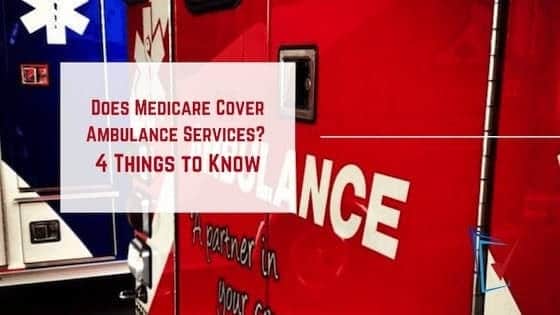Have you ever had to travel in an ambulance? Did you know that 35.2 percent of adults over 64 need ambulance transport to the emergency room each year? Ambulances are used for non-emergency transportation as well.
Do you wonder about Medicare and ambulance service coverage? Keep reading to learn the answer to this question.
Different Ambulance Services
Most people know that ambulances take people to the hospital during emergencies. They also accept patients from long-term care facilities for appointments or tests.
Ambulances are commonly staffed with paramedics or emergency medical technicians (EMTs). They travel by ground or air.
Coverage with Medicare
“Original Medicare,” Medicare Part A and B, is a federal health insurance program. It's available for U.S. citizens and legal residents over 64 years. Younger people with disabilities and those with end-stage renal disease can also qualify.
Each year, Medicare enrollees must meet a deductible. They also pay a 20 percent co-pay for Medicare-approved services.
Medicare Part A covers inpatient hospitalizations. It also pays for skilled nursing facilities (SNF) and hospice care. Part A covers some home health care services as well.
Medicare Part B covers specific physician, outpatient, and preventive services. It also pays for medical supplies.
If you want prescription medication coverage, you need Medicare Part D. This is a separate Medicare-approved plan that you must buy.
Insurance Plan Options
Since Medicare doesn't cover all medical expenses, many people buy extra insurance. Medigap is supplemental insurance that covers the gaps in Original Medicare.
Medicare only pays for 80 percent of significant medical costs. Medigap coverage includes deductibles, co-pays, coinsurance, blood, and foreign travel.
Medicare and Ambulance Coverage
Medicare Part B will cover emergency ambulance services. In some cases, they also pay for non-emergency ambulance transportation and services.
Eligible emergency ambulance services include the following situations:
- It's the only medically safe way for your transport
- Transport to and from a facility for Medicare-covered services
- Transportation to and from specific locations according to Medicare guidelines
The ambulance company must meet Medicare requirements.
Non-emergency ambulance services require that the patient is bedridden and unable to walk or sit. Or if the patient needs medication administration or monitoring of vital functions during transport.
Medicare may cover scheduled trips with a prior written order from your doctor. If Part A pays for your care in an SNF, SNF will pay for most ambulance services.
Covering Life Flight
Life Flight is a private plan in that members pay an enrollment fee for participation, providing air transportation in a medical emergency. This plan also offers ground transportation by participating companies.
Medicare Part B will not pay for membership or other fees. Yet, Part B will pay for medically necessary air transport, meaning if you require immediate, rapid transportation that can't be provided via ground ambulance.'
Any part not covered by Part B is billed to Life Flight if you're a member.
Are You Looking for Answers About Medicare?

Most people have questions about the many parts of Medicare coverage. This article answered the question about Medicare and ambulance coverage.
Senior Affair is your source for information about Original Medicare and Medicare Gap programs. We're not an insurance provider or agency. Thus, we can't answer specific questions about claims, eligibility, or payment.
If you qualify for Medicare but don't know where to start, we have licensed insurance agents ready to answer your questions and help you enroll in Medicare Advantage, Medicare Supplement Insurance, and Prescription Part D plans.



